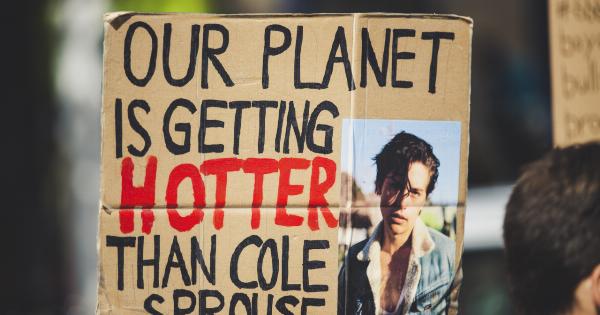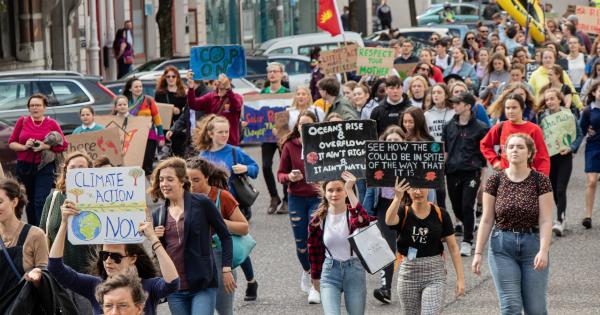The climate crisis, also known as global warming or climate change, refers to the long-term changes in Earth’s climate system.
This phenomenon is primarily caused by the emission of greenhouse gases, which trap heat in the atmosphere and result in rising global temperatures. The consequences of the climate crisis are far-reaching and have a deadly toll on human life in various ways.
Extreme Weather Events
One of the most noticeable effects of the climate crisis is the increasing frequency and intensity of extreme weather events.
Heatwaves, hurricanes, floods, and droughts are becoming more severe and frequent, causing significant destruction and loss of life. Heatwaves, in particular, pose a grave threat to vulnerable populations, such as the elderly and those with pre-existing health conditions, leading to heat-related illnesses and fatalities.
Impact on Health
The climate crisis also has significant implications for human health. Changes in temperature and precipitation patterns can lead to the spread of infectious diseases, such as malaria, dengue fever, and Lyme disease.
Moreover, air pollution resulting from the burning of fossil fuels exacerbates respiratory issues, such as asthma and chronic obstructive pulmonary disease (COPD). These health impacts disproportionately affect marginalized communities with limited access to healthcare and resources to adapt to these changes.
Rising Sea Levels and Coastal Flooding
The rising global temperatures are causing the polar ice caps to melt at alarming rates. As a result, sea levels are rising, endangering coastal communities around the world.
Coastal flooding and erosion have become increasingly prevalent, leading to the displacement of populations and loss of homes, infrastructure, and livelihoods. Small island nations and low-lying coastal regions are especially vulnerable to this threat, exacerbating the climate injustice faced by these communities.
Ecological Disruptions and Biodiversity Loss
The climate crisis is disrupting ecosystems and endangering biodiversity. Changes in temperature and precipitation patterns affect plant and animal species, disrupting their habitats and life cycles.
As a consequence, numerous species are facing extinction, leading to a loss of biodiversity and imbalances within ecosystems. The extinction of vital species, such as bees, also poses risks to global food security, as these pollinators play a crucial role in crop production.
Food and Water Security
Climate change poses a severe threat to global food and water security. Changes in precipitation patterns result in droughts and reduced water availability, making it challenging for agricultural practices and water supplies to meet societal demands.
Rising temperatures also contribute to crop failures and reduced agricultural productivity. As a result, food scarcity can lead to malnutrition and famine, particularly in regions already facing poverty and limited access to essential resources.
Displacement and Migration
The climate crisis is causing mass displacement and forced migration of communities. As extreme weather events and rising sea levels render certain areas uninhabitable, people are forced to leave their homes in search of safer living conditions.
This displacement puts tremendous pressure on already crowded urban centers, aggravating social and economic challenges. Displaced populations also face a heightened risk of poverty, discrimination, and conflict as they search for new homes and livelihoods.
Threats to Infrastructure
Infrastructure systems, including roads, bridges, power grids, and buildings, are vulnerable to the impacts of the climate crisis.
Extreme weather events, such as hurricanes and floods, can cause significant damage to infrastructure, disrupting transportation networks, cutting off access to essential services, and posing risks to public safety. The cost of repairing and reinforcing infrastructure to withstand future climate-related events is substantial, diverting resources from other critical sectors.
Security and Conflict
The climate crisis has the potential to exacerbate existing social inequalities and fuel conflicts. As communities face resource scarcity, including water and arable land, competition and tensions rise.
In some cases, this competition can escalate into violence and exacerbate political instability. Additionally, climate-related migration may lead to conflicts between displaced populations and host communities, as limited resources become strained.
The Urgency for Immediate Action
The escalating climate crisis requires immediate and comprehensive action to mitigate its deadly toll on human life.
Countries and individuals must work together to reduce greenhouse gas emissions through transitioning to renewable energy sources, improving energy efficiency, and adopting sustainable practices across sectors. Investing in climate resilience and adaptation measures can help vulnerable communities prepare for and withstand the impacts of climate change.
Global Cooperation and Policy
Addressing the climate crisis requires global cooperation and collective commitment. International agreements and policies, such as the Paris Agreement, aim to limit global warming and promote sustainable development.
Governments must prioritize the development and implementation of robust climate policies that support a just transition to a low-carbon economy. Additionally, individuals and communities play an essential role in advocacy, education, and adopting sustainable lifestyles to drive significant change.
Conclusion
The climate crisis presents a grave and deadly toll on human life, impacting various aspects of our existence, from health and food security to infrastructure and global stability.
Urgent action is necessary to combat climate change, reduce greenhouse gas emissions, protect vulnerable communities, and promote sustainability. The time to act is now to ensure a livable and secure future for ourselves and future generations.























